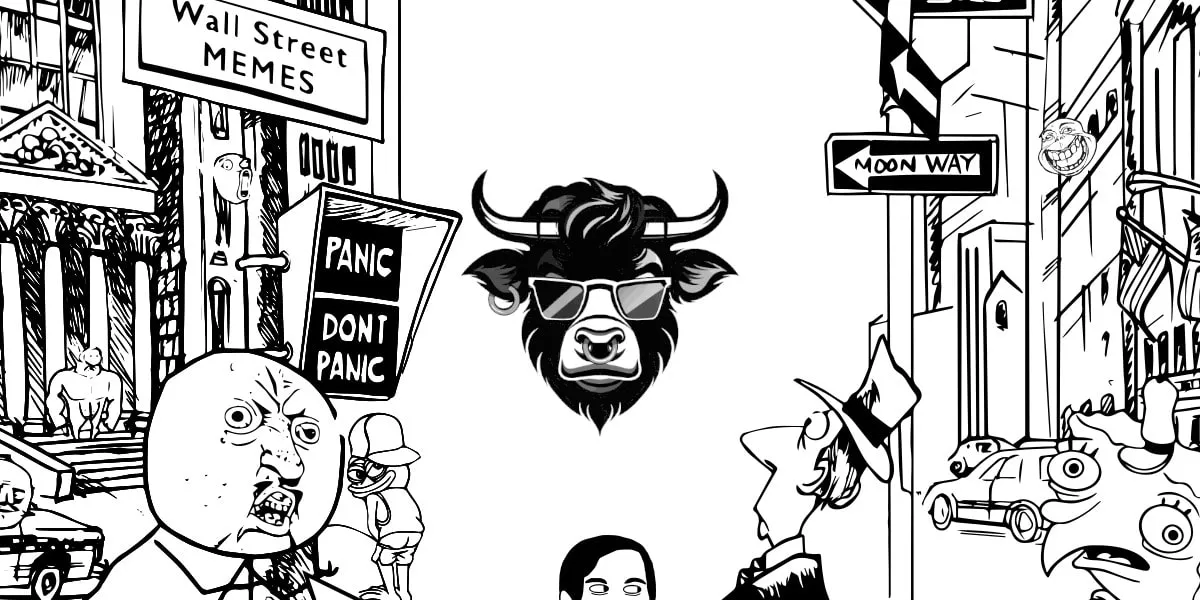Wall Street Bros Discover Memecoin Philosophy
It began, as all great financial revolutions do, with confusion, denial, and a Bloomberg headline that made everyone choke on their almond lattes. Sometime in late 2025, a group of Manhattan hedge fund analysts armed with MBAs, Rolexes, and existential dread decided that if they couldn’t beat the memecoins, they might as well understand them. What followed was not so much market research as a spiritual awakening disguised as a trading strategy. Wall Street, meet “Memecoin Philosophy,” the chaotic blend of irony, decentralization, and pure internet absurdity that has reshaped how an entire generation thinks about value.
When Risk Management Meets Dog Pictures
The turning point came when Dogecoin briefly overtook several blue-chip stocks in daily trading volume. For years, analysts had dismissed memecoins as speculative entertainment. But then Gen-Z traders started doing something Wall Street didn’t expect: winning. A 24-year-old streamer in her pajamas outperformed entire trading desks by holding Shiba Inu for “vibes and destiny.” That kind of irrational conviction, once mocked, suddenly looked suspiciously like alpha.
So, the bros adapted. “We applied our risk-adjusted valuation model,” said one anonymous junior analyst, “and realized our model was wrong.” They started attending Discord AMAs instead of macro briefings. They began quoting Pepe philosophers on Slack. Compliance departments grew nervous. But for the first time since the GameStop saga, Wall Street felt alive again.
In their attempt to understand memecoins, they discovered what they thought was a behavioral-finance experiment was, in fact, a sociological one. Meme tokens were not about discounted cash flows or utility metrics. They were about collective emotion the same crowd energy that moves luxury markets and political campaigns. “Dogecoin is Keynesian beauty contest theory with a Shiba face,” one partner reportedly said, seconds before buying 1.2 million FLOKI on his phone.
From Market Efficiency to Meme Enlightenment
It turns out, memecoins operate on a philosophy Wall Street textbooks never covered: The Vibe Economy. Here, value is less about fundamentals and more about narrative synchronization. If enough people believe something is valuable, it becomes valuable at least long enough to trend on Crypto Twitter. Memecoins are the digital performance art of finance, where community humor is both marketing and monetary policy.
Suddenly, the same analysts who once debated yield curves were making meme decks titled “Sentiment as Liquidity.” They realized that decentralized communities can coordinate faster than central banks react. When an anonymous developer tweets a frog emoji, liquidity surges across chains before the Fed can issue a press release.
A managing director at a major fund described his “philosophical journey” during a panel in Midtown: “At first, I thought memecoins were chaos. But then I saw that chaos is the point. It’s a live experiment in collective belief.” He later admitted he bought BONK “for research purposes.” His research is reportedly up 300 percent.
Behind the satire, there is an uncomfortable truth. Memecoins have democratized the one thing finance used to guard: narrative control. Retail traders, meme creators, and online communities now shape market psychology faster than institutional analysts can model it. The result is part performance art, part financial anarchy a system where attention itself is the asset.
The New Age of Post-Financial Enlightenment
As 2026 approaches, the meme philosophy has seeped into the marble halls of traditional finance. Corporate treasurers now ask whether “community sentiment” can be a risk metric. Asset managers launch “Meme Indices” that track coins with the highest social engagement-to-market cap ratios. One ETF prospectus even listed “humor resilience” as a factor weighting.
Analysts, trained to dismiss emotion, are now paid to quantify it. Meme fluency has become a professional skill. Interns once mocked for trading cartoon coins during lunch breaks are now being promoted for understanding “digital culture liquidity.”
The irony runs deep. Wall Street has spent decades building models to predict markets, only to realize that the most powerful predictor is collective irony itself. In the memecoin universe, absurdity isn’t irrational it’s alpha. If everyone knows it’s a joke, and they still buy in, the joke becomes a self-fulfilling prophecy. The “efficient market hypothesis” has finally met its chaotic twin: the “efficient meme hypothesis.”
Of course, this all comes with a disclaimer. Memecoins are volatile, unpredictable, and largely immune to rational valuation. But that hasn’t stopped institutions from quietly exploring exposure. After all, if culture now dictates capital flows, ignoring the meme economy is bad risk management.
Conclusion
Wall Street’s encounter with memecoins has become more than a market curiosity it’s a cultural reckoning. The analysts who once traded on fundamentals are learning that in the digital age, belief and belonging move faster than spreadsheets. What began as irony has matured into influence. In chasing yield, the bros found philosophy. Memecoins, once dismissed as digital graffiti, have revealed a deeper truth: markets have always been about stories, not numbers. And in a world where finance runs on collective attention, maybe the traders who trade for the meme are not the fools they’re the future.




